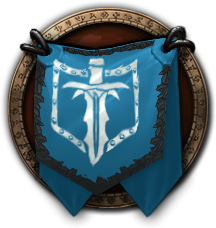This guide has been updated for the Shadowlands.
Hey guys, Tiraffe here with another guide. This guide was originally written back in September/October during patch 8.2, but school got in the way and was eventually posted near the start of 8.3. For credentials, I hit 2400+ once in BFA season 2 and got the gladiator mount/title for that season, for those that care about that sort of thing.
In BFA, the goal of this guide was to help folks get Combatant or get the rank 2/3 of the Conflict and Strife Essence, with this being a ‘short’ guide to go over some basics. In Shadowlands, the goal of this guide is largely the same, introduce and familiarize those new to PVP to make their way to Combatant and beyond. Rated PVP in Shadowlands is less mandatory for those focused on PvE, as essences don’t work in the Shadowlands, but can still provide an alternative method to gearing and acquiring certain conduits and legendary recipes.
Arenas can be hard to get into, since pugs are usually looking for specific team comps, even if they’re looking to just get the conquest cap; pugs are are usually looking for someone that has similar or greater experience, similar to Raider.io scores for mythic+ dungeons. In addition, arenas have much smaller team comps consisting of either 2 or 3 players per team, so individual performance is just as important as knowing class matchups. This guide can help give some names to things you may have already seen in rated PVP.
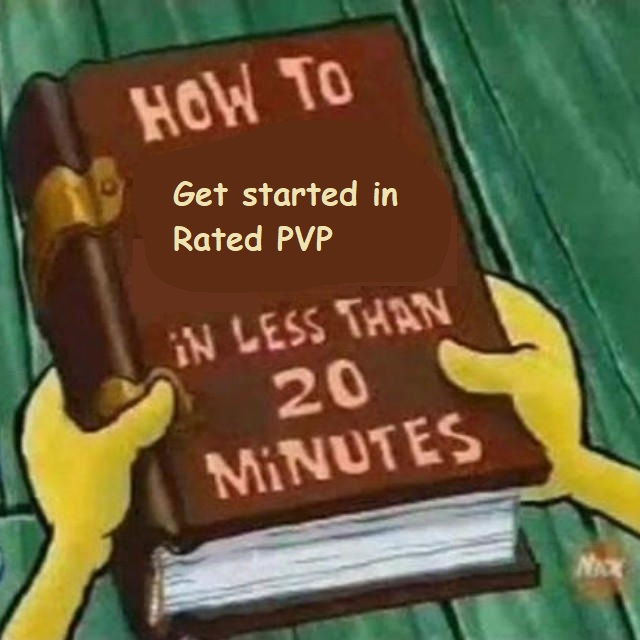
Disclaimer: Reading a single guide won’t instantly guarantee success. Once you think you’ve got a handle on the concepts, go out and give them a try in a match.
If you’re new to rated pvp, make sure to get familiar with some of the pvp terms beforehand: https://www.wowhead.com/glossary-to-wow-pvp-terms
The requirements for the goals above are listed as follows:
- Combatant: Requires reaching 1400 in a rated bracket (2’s, 3’s or RBGs)
- This is also the minimum rating needed to start progress towards the season’s PVP mount, which shows as a progress bar on the rated PVP tab in group finder
- Hitting 1400 also means you start getting the option to pick rated PVP pieces from the Great Vault that around the same ilvl as gear from normal raid, in addition to any other parts of the Great Vault you’ve unlocked for the week. Increasing your rating beyond that will increase the ilvl when you hit the next bracket of rated pvp.
- There is no separate Weekly PVP chest to worry about. Each Rated PVP section of the Great Vault requires earning an increasing amount of honor from rated PVP, which doubles as currency to purchase gear from the new PVP vendors.
- Winning matches in rated pvp will also grant Conquest, which are used to purchase rated PVP gear from Zo’sorg in Oribos.
- In addition, those seeking the Elite PVP tmogs can get specific parts of the tmog at different rating brackets.
Table of Contents
- 3 P’s of PVP
- Pressure (Offensive Crowd Control and Damage)
- Prevention (Defensive Crowd Control and Healing)
- Positioning (Damage and Healing)
- Class Knowledge and Racial Abilities
- Team Composition
- Crowd Control, Diminishing Returns and the PVP Trinket
- Gearing (Stats, Traits/Essences, Trinkets, Covenants/Soulbinds)
- Talents and PVP Talents
- Open-World Stuff
1. The 3 P’s of PVP:
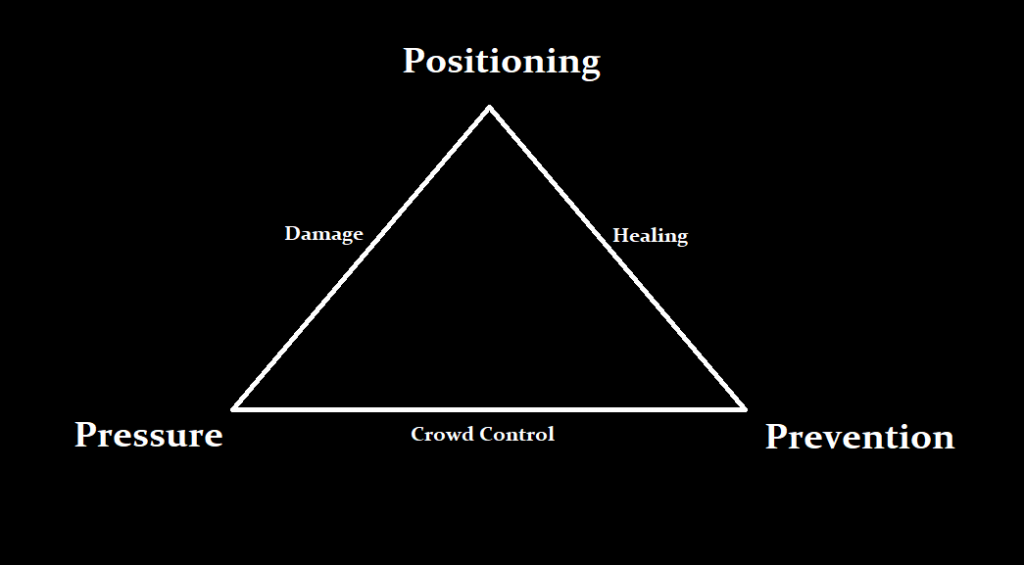
All PVP revolves around the concept that I call the 3 P’s: Pressure, Prevention and Positioning. Simply put, each part of PVP revolves around putting oneself in a position to not only have enough pressure to kill their opponent, but also prevent their own death as well as their teams in the process. Each aspect is comprised of two components, the two nearest sides of the triangle, and an appropriate response from the opposing team on the far side.
Pressure:
Pressure is your team’s possible damage output and crowd control combinations, and is countered by healing, absorbs and defensives from the other team. Teams with a very high damage output will require an equal or greater amount of healing from the opposing team to offset the damage taken. Pressure can also come in the form of healing reductions and healing absorbs, that increase the amount of healing needed on the target. Teams with a variety of crowd control options can also coordinate their crowd control to reduce the amount of sustained damage needed to secure a kill.
Prevention:
Prevention is your team’s possible healing and damage mitigation tools. These range from heals to shields to mobility to well-timed crowd control when the other team is using their offensive cooldowns. Teams with a lot of off-healing require less throughput from their healer and teams with reliable crowd control can heavily reduce the amount of pressure they face when used right after their opponents activate their damage cooldowns or to force their defensive cooldowns early.
Positioning:
Positioning is most likely the hardest concept to master for getting into PVP and arenas. Where you’re standing in relation to both your team and the enemy team heavily influences how the match will play out. Part of this also includes the concept of Line-of-Sight, which I’ll go over in part 8. Simply put, it’s often not a good idea to stand on the enemy team when you’re ranged and it’s not a good idea to stand out in the open when you’re melee. There are exceptions to this of course, certain crowd control spells and abilities require being within 5 yards of the target or in melee range to hit. This also makes those specific abilities really predictable if the target is far away from you.
2. Class Knowledge and Racial Abilities
Class Knowledge:
Class knowledge is the 2nd hardest thing to pick up, since it relies entirely on how well the individual knows every single class’ abilities, including their common talent choices, azerite essences and azerite traits. At the minimum, it’s important to know how to handle the most popular specializations used in arenas.. This also extends to your teammate’s classes as well.
Here’s a couple examples:
- Pet classes (BM Hunters, Warlocks and Unholy DKs) suffer heavily if the pet is crowd controlled and/or killed.
- In the Shadowlands, both Hunters and Warlocks take longer to resummon their pets if they go down.
- Any class that relies heavily on DoTs (mainly Aff Locks and Spriests) may struggle if the opposing team has multiple ways to remove the DoTs outside of the healer’s own dispel or if the healer can dispel two or more people with a single spell, as some spells are considered curses, poisons or diseases that can be removed by hybrid classes such as Paladins.
- Fury Warriors and Shamans have abilities that can both break Fears and Charms, as well as give a brief immunity to those crowd control types.
- Shamans in Ghost Wolf and shapeshifted Druids are immune to Polymorph and Hex while transformed.
- Priests can use Mass Dispel and Warriors can use Shattering Throw to remove Ice Block, Divine Shield, and Cyclone among other immunities.
- Druids and Arms Warriors have access to Bear Form and Defensive Stance respectively. If your team is able to put out enough pressure, these players may be forced to use these spells for extended periods of time and reduce their dps/hps output as a result.
- Rogues have Subterfuge, which lets them use their stealth abilities for 3 seconds after losing stealth, whereas feral druids and druids with feral affinity as a talent don’t have this luxury.
The list goes on. What matters is that there are certain class-to-class interactions that can put either side at an advantage or disadvantage. The more the individual player knows about these interactions, the better than can prepare and play in the arena.
Racial Abilities:
Compared to PVE, racial abilities in PVP are much more impactful due to the nature of the game. Simply put, certain races are much more desirable in PVP due to the following reasons, not listed in order of importance:
- Synergies with a class or team composition. Ex. The Orc racial Command gives their pets 1% increased damage, which synergizes slightly with DKs, Warlocks and Hunters. The Troll racial Berserking provides a significant burst potential to a variety of classes. Night Elf Rogues can use Shadowmeld as a 2nd vanish.
- Extra button that removes or reduces one or more types of crowd control or debuffs. Ex. Human, Gnome, Orc, Undead, Dwarf, Dark Iron Dwarf, and Troll.
- The racial abilities, usually active, that provide either extra mobility or extra crowd control.
- Extra Mobility: Rocket Jump for Goblins, Darkflight for Worgen, Spatial Rift for Void Elves
- Extra CC: Warstomp for Tauren, Quaking Palm for Pandaren, Haymaker for Kul’tirans
- Both: Bull Rush for Highmountain Tauren.
- Other:
- Arcane Torrent for Blood Elves as an aoe offensive dispel, but requires being in melee range.
- Light’s Reckoning/Light’s Judgment for Lightforged Draenei to deal a burst of damage after death/before death.
- Bag of Tricks for Vulpera is best used to fill downtime for some specs, or as an emergency heal.
- Hyper Organic Light Originator for Mechagnomes can be used to take advantage of square root scaling for aoe abilities, namely Meteor from fire mages, as a defensive.
As an aside, in Shadowlands, the PVP talents for removing crowd control have been reverted back to being actual trinkets. This should, in theory, remove the need to acquire PVE trinkets to stand a chance in PVP, but that depends on tuning. For the crowd control removal racial abilities, most of them share cooldowns with the activated Gladiator’s Medallion PVP Trinket mentioned later in the guide. In addition, the Orc racial Hardiness does not stack with the Relentless PVP Trinket.
As a general note, if you plan on making a fresh character to do PVP, the racial abilities is something to keep in mind. However, they aren’t as crucial as they may sound until the higher ratings of arenas. The same goes for what class you’re playing, where if you’re just looking to get your feet wet, you’re fine to go with what you find most interesting or what you’re most comfortable on. Think 1800 rating or higher, where the enemy team might start playing around an extra cc, stun, burst of damage or burst of healing or take advantage of the differences between certain classes.
When it comes to what races to go for, you also need to keep in mind of what your class is weak against, what it is lacking in its general toolkit or what it can combo with.
- Zandalari Paladins or Priests can use Regeneratin’ when their Divine Shield or Greater Fade is active to fully heal themselves.
- Worgen, Goblins, Gnomes and Trolls can use their racial abilities to make up for the Deathknight’s subpar mobility.
- Tauren and Highmountain Tauren can use their Warstomp and Bull Rush as stuns to more easily follow-up with crowd control.
- Melee classes that are also Blood Elves give those classes a chance to counter dispellable buffs that shut down physical attacks.
In terms of generally popular races for PVP, it usually falls to the following races at the time of writing:
- Horde
- Orc
- Undead
- Troll
- Goblin
- Blood Elf (Melee Classes)
- Alliance
- Human
- Night Elf
- Dark Iron Dwarf
- Gnome
- Void Elf
Most of the other races aren’t too far behind. If you want to race change or minmax for specific race/class combinations, I’d recommend checking out the pvp guides on Wowhead, Icyveins or the pvp channels in the class discords. Links are available at:
https://www.icy-veins.com/wow/pvp-class-guides and https://www.wowhead.com/pvp-guides
Otherwise, feel free to keep playing whatever race your character currently is, it usually isn’t worth the cost unless you have a bunch of gold lying around to race change.
3. Team Composition
Team composition is another important concept when it comes to arena. In short, your team composition will determine how your team will play, in terms of pressure, prevention and positioning. Note: team composition is much more important in 3’s. In 2’s, most any combination of either double dps or dps/healer can be used. Tank specs are a bit of an exception, as only prot warrior and prot paladin have historically seen regular play, typically played with a dps that has either high cc or high self-sustain. Guardian Druid and Blood DK have popped up a few times during 8.2 and 8.3, likely due to the Essences/Corruption during those patches.
3’s teams are generally divided into several different categories based on that team’s win condition:
Melee Cleaves:
Any two melee classes, plus a healer. Melee cleaves generally have a high amount of aoe and single target damage and work best when they can convince at least two of the three enemy players to stand next to each other. Melee Cleaves aim to play very aggressively to force the enemy team on the defensive. Most new healers in arena will struggle against melee cleave due to the sheer pressure as a result of their damage, with Resto Shamans struggling heavily in particular.
They usually have limited cc options, so Melee Cleaves can be stalled with enough peeling compared to other team compositions and certain variations are weak to certain damage types, as well as what healer is used for that team. Melee cleaves that have hunters, paladins, and/or feral druids also bleed over into Set-up Comp territory. Healers that can be aggressive, such as Mistweaver Monks, Holy Paladins, and Disc Priests, work well with Melee Cleaves.
Due to the sheer variety between Melee Cleaves, examples include:
Ret/Hunter/Healer (commonly known as Cupid Cleave, )
Feral/Hunter/Healer (commonly known as Jungle Cleave)
Windwalker/DK/Healer (commonly known as TWD, ‘The Walking Dead’)
Enhancement/Warrior/Healer (commonly known as Turbo Cleave, usually with a mistweaver)
Rot Comps:
Rot Comps aren’t solely limited to being either melee or ranged comps. These comps are defensively focused, aiming to stall the game out until either the enemy team falls over due to Dampening or until they can force out a burst of damage and crowd control finish off low health targets. Above all else, they usually have high sustained damage across two to three targets.
These comps are usually played with any of the following specs:
Warlocks, Shadow Priests, Druids (including Feral), Shamans (including Enhancement), Rogues and Hunters (mainly Marks and Survival). In addition, defensive healers such as Resto Shamans, Holy Paladins and Resto Druids usually pair best with Rot Comps.
Depending on the specific comp, these comps will also overlap with either Set-up Comps or Wizard Comps. You can mix and match a lot of these comps, but it’s important to be aware if your comp’s crowd control can be broken, in which case you need to only rot two of the three players of the enemy team and crowd control the third.
Examples include:
Feral/Shadow Priest/Holy Paladin
Warlock/Shadow Priest/Healer
Rogue/Warlock/Healer (typically played with a Resto Shaman or Holy Paladin)
Warlock/Shaman/Resto Druid
Set-up Comps:
Boasting a bunch of hard crowd control, Set-up comps usually have decent sustained damage, but rely on getting an extended crowd control chain on either a healer or a dps to force a 3v2 or 3v1 scenario. Doing this correctly allow these comps to effectively push the game in their favor, but doing this poorly can make going for another cc chain more difficult if the players can’t find room to breath.
Historically, these comps usually include either a Rogue, Mage or Warlock, coupled with a healer that can reliably land ranged crowd control such as a Resto Druid, Resto Shaman or Holy Paladin. Certain Melee Cleaves, mainly those involving Hunters and Paladins also qualify as a Set-up Comp, mainly due to the Hunter’s CC. A Warrior/DH or Priest/Boomkin can also be swapped in place of a Rogue or Mage respectively.
Examples include:
Rogue/Mage/Healer (commonly known as RMP/RMD, played with a Disc or Resto Druid)
Rogue/Warlock/Healer (typically played with a Resto Shaman or Holy Paladin)
Rogue/Shadow Priest/Resto Shaman
Mage/Warlock/Healer
Warrior/Mage/Holy Paladin
Feral/Mage/Holy Paladin
DH/Boomkin/Resto Shaman
Wizard Cleaves:
Also known as double caster comps, Wizard Cleaves are the ranged version of Melee Cleaves and they generally boast a much greater ability to peel for their teammates. Due to all 3 members of the team being ranged, they can also assemble a triangle formation that makes it very difficult for Melee Cleaves to, well, cleave. And again, some Wizard Cleaves also operate as Rot Comps.
Wizard Cleaves also work quite well when they can fight out in the open, and prevent their opponents from escaping due to their positioning. Against other Wizard Cleaves, the team that can better position themselves will have an easier time dealing damage as well as crowd controlling key targets. Should their positioning fail however, and it’s quite likely for Wizard Cleaves to fall if they can’t reset the game to a neutral position.
Examples include:
Elemental/Boomkin/Resto Shaman or Holy Paladin
Mage/Warlock/Healer
Shadow Priest/Warlock/Healer
Mage/Boomkin/Healer
In a way, it’s like rock-paper-scissors: https://www.youtube.com/watch?v=vX1dPTAQ5_U
For more info on how certain team comps operate as well as their pros and cons, check out: https://www.wowhead.com/popular-compositions-for-wow-3v3-arena and
https://www.icy-veins.com/wow/pvp-arena-tier-list
Most of the team compositions listed here are here because they were popular at some point in WoW’s history, and that you’ll probably have more success by default if you know how to play these comp. Certain team compositions are also much more difficult in terms of risk and reward. It’s also important to remember that while certain team compositions have advantages or disadvantages when facing certain team compositions, there is almost always room to outplay your opponents, which brings us to the next part of the guide.
4. Crowd Control, Diminishing Returns and the PVP Trinket
Crowd control is the defining factor that separates PVP and PVE. Preventing someone from acting in PVP is essential, in that not only drops their damage and healing outside of DoTs, HoTs and placed spells, but it also prevents them from using crowd control of their own. A well timed Mind Control can absolutely devastate an opposing team’s chances of winning. However, it’s just as important to not waste any crowd control. Outside of slows and the occasional root/snare, crowd control shouldn’t be spammed for two reasons. Those reasons are Crowd Control Overlap and Diminishing Returns
Crowd Control Overlap
When used defensively, crowd control is often referred to as ‘peeling’ or ‘peels’. At a minimum, it involves throwing a slow, snare or root on a target to allow another character to simply walk away from a fight. Against melee classes, this is particularly useful and can make the melee class feel as though they can’t do anything, leaving only brief periods where melee can act when the crowd control isn’t overlapped. This is demonstrated quite visibly in the following video:
https://www.youtube.com/watch?v=qrs7LnmdNy8 – Warrior vs Frost Mage
The overlap is a simple concept. It mainly means to avoid applying hard crowd control to a target right after one has already been applied. Hard crowd control refers to any crowd control ability that prevents the target from doing most anything. This includes stuns, roots, disorients, incapacitates, and silences as well as knockbacks to an extent. For example, there’s no point in applying a root onto someone that is stunned, unless it’s at the very end of the stun. Slows and snares are unaffected by overlap.
Overlapping crowd control not only wastes the cooldown, if the crowd control has a cooldown, but also means that the target can use their pvp trinket to remove the effects of both crowd control abilities instead of just one. As such it’s important to communicate and coordinate crowd control so that it isn’t wasted. This even more important for crowd control of the same ‘type’, as a result of Diminishing Returns or DR.
Diminishing Returns
Diminishing returns is a game mechanic that affects the duration of crowd control on a target, if that target had previously been afflicted with that ‘type’ of crowd control within a certain time frame. That time frame is 18 seconds, starting from when the most recent crowd control of that ‘type’ ends. Each subsequent crowd control of the same type will last either 50% of 25% of its base duration depending on if it was the 2nd of 3rd cast of its ‘type’.
For example, Polymorph doesn’t have a cooldown, so a Mage can Poly a target for 8 seconds from the first cast, then for 4 seconds if cast again on the same target within 18 seconds, and finally 2 seconds if cast a 3rd time after a 2nd cast within the time frame. After a 3rd cast of the same ‘type’, the target will be immune to crowd control of that ‘type’ until the 18 second time frame is over.
This is why it’s important to do 2 things:
- Always cast the longest duration of a crowd control type first, to get the maximum duration from it. For example, it’s almost always better to stun with a 5-Combo Point Kidney Shot from a Rogue or a HoJ from a Paladin before using any other stuns since these two stuns have a 6-second duration compared to the average of 4 seconds for most other stuns.
- If you’re going for a cc chain, you’ll want to max out the cast of a specific ‘type’, before crowd controlling with a different type, so that the first ‘type’ can be used sooner while the target is still cc’d from the 2nd ‘type’. This is illustrated below using a cc chain commonly used by Rogue/Mage teams.
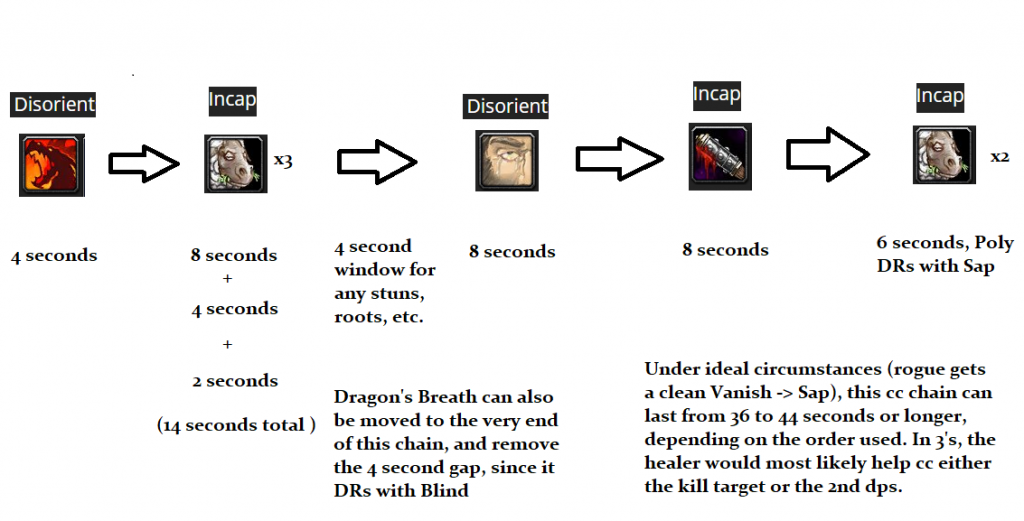
One last thing regarding these cc chains is any cc chain using a magic debuff needs to be wary of healers and Shadow Priests being capable of dispelling the negative effects. Ideally, CC can be used earlier in the match to force members of the enemy team to put their trinkets on cooldown, allowing your own team to get the full duration of a cc chain without a last second save from the enemy team.
For what crowd control abilities share Diminishing Returns, the most up-to-date list can be found at: https://www.wowhead.com/crowd-control-diminishing-returns-wow-pvp . This is list is missing a couple things though, mainly talents such as Shadow Priest’s Psychic Horror, which is a stun and not a horror, even though it used to be, Shadow Priest’s Mind Bomb, which was previously a stun before changing to a disorient in BFA, and Holy Priest’s Holy Word: Chastise, which can be talented into a stun.
Knockbacks also follow a different pattern for Diminishing Returns such that they immediately go to a 0% effectiveness after the first knockback until the 18 second time frame has passed. This can make it more difficult to keep enemies away if your team relies on knockbacks for peeling. Having multiple knockbacks (and also Mind Control, which is a disorient) can still be very crucial for keeping healers out of range of their dps or taking advantage of the map’s terrain.
Finally, it is important to note that certain abilities will end up ignoring Diminishing Returns. These abilities are:
- The stun from casting Summon Infernal for Destro Locks
- Death Grip from Deathknights
- Ring of Peace from Monks
The PVP Trinket
In the past, and now in the Shadowlands, the PVP trinket was an actual trinket that would take up one of your trinket slots. During Legion and BFA, this was changed to offer a choice of 3 different styles of PVP trinkets, available as a PVP Talent. In short, it would allow you to remove all or most instances of crowd control on you on a 2 minute cooldown.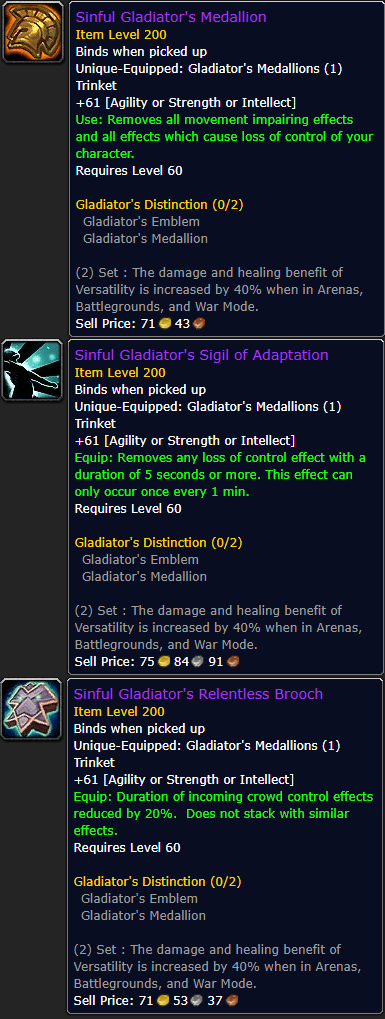
Which PVP Trinket should be used depends on three things:
- If you’re playing as an Orc, it’s not advised to ever pick Relentless, since a good chunk of common crowd control options are stuns. Your racial passive already provides a 20% reduction in incoming stun durations, and does not stack with Relentless.
- If at some point you need to come out of crowd control at exactly the right moment for a crucial spell such as Void Shift for Shadow Priests or Life Cocoon for Mistweaver Monks, take Gladiator’s Medallion. Also highly recommended to take the medallion against rogues.
- Take Relentless against teams that spam cc such as a Warlock’s Fear or a Druid’s Cyclone. Take Adaptation against teams with cc with large cooldowns such as Paladin’s HoJ or Hunter’s Freezing Trap.
Certain classes and races have also specific abilities that can allow them to either ignore or break certain types of crowd control by causing damage to themselves or causing a friendly target to become immune. When used well, this saves the healer from having to dispel or a friendly teammate from having to use their PVP trinket. This includes:
- Disc Priests can use Premonition and all Priests have access to Shadow Word: Death.
- Holy Paladins can use Blessing of Sacrifice/Ultimate Sacrifice/Blessing of Protection to take damage and break cc without using a trinket if timed correctly.
- Spell Reflect, Netherward, Grounding Totem and Tremor Totem can be used to stop incoming cc.
- Ret Paladin’s Blessing of Sanctuary can be used to both cleanse and grant immunity to a variety of crowd control abilities.
Do also take note of the 2-piece set bonus for having 2 PVP trinkets equipped, as the Medallions are the CC removal trinkets and Gladiator’s Emblems are the various On-Use and Passive stat boosting trinkets commonly gained from doing PVP. Examples of these include the Emblems, Insignias and Badges.
Looping back to the Class Knowledge section, make sure to know what your class can do and what your opponents can do, so you can play around and counter the enemy team.
5. Gear (Stats, Traits/Essences, Trinkets, Covenants/Soulbinds)
To make this section short: Yes, gear does matter in arena. As of Shadowlands prepatch, there isn’t any PVP scaling. If you arrive later into the season, you may want to farm PvE or battlegrounds to catch-up first before going into rated. For healers especially, it is important to be as geared as possible, as undergeared healers will certainly struggle, and it is easier for a geared healer to keep a team up than it is for a geared dps to keep the healer alive.
Stats
When starting, players will likely follow their single target stat distributions in PvE. Later on, prioritize ilvl and Versatility on gear, as both stats enable you to hit harder and take more hits.
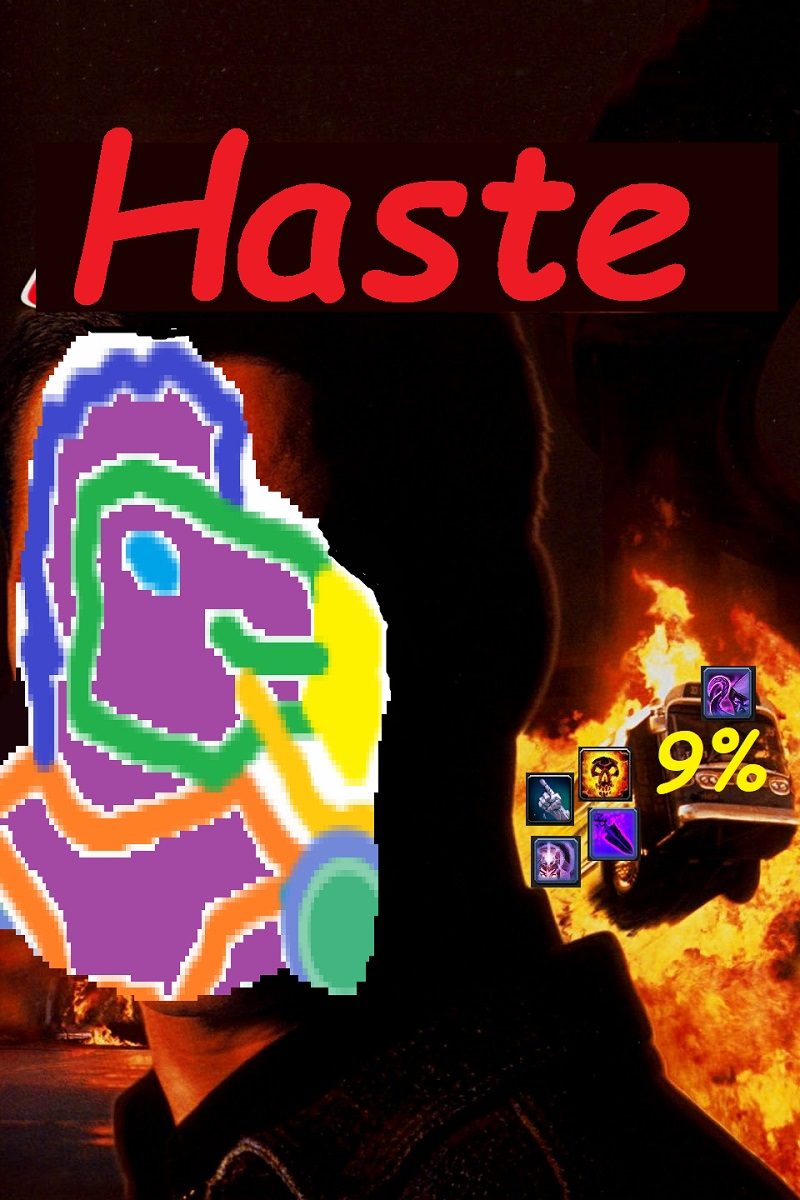
For most classes, the secondary stat combos to look for are Haste/Vers (gives high consistent damage, most dps) or Vers/Mastery (gives high efficiency, most healers) in arenas, and all other forms of pvp.
Versatility is the go-to secondary stat since it automatically doubles as a defensive stat and can be especially useful if you think you’re going to get focused by the enemy team.
More haste will make it easier to do your rotation inbetween getting crowd-controlled by the enemy team. Inversely, having super low haste makes it difficult to capitalize on crowd control or healing/damage cooldowns as losing a single cast during those times can be the difference between the target living or dying. You’ll want enough haste to get all of your damage out during your burst window.
Mastery will lend to getting more bang for your buck out of each individual cast, but relies heavily on how well mastery scales for your individual spec and if haste is something your spec needs.
It is important to note that Crits in arena deal 175% of their normal damage in arenas rather than the 200% increased damage that they would normally do outside of arenas. For most classes, crit is near the bottom of secondary stats you want in PVP. If your class does not rely on crit for their spells or does not gain as much benefit from critting during a huge burst, you should probably swap any crit gear for other stats if you can for more reliable output. For example, a Frost Mage will still prioritize Haste/Vers, but if they get stuck with gear that’s either crit or mastery, they should be picking up crit as mastery scales poorly for Frost Mage and they’ll want the crit to get closer to their Shatter breakpoint of 33% crit.
Lastly, make sure that you are reaching any sort of breakpoints for your class and spec to function. Make sure to doublecheck your stat priority for your specific spec as well.
Trinkets
Trinkets are situational. In practice, it’s best to try out different trinkets both for different situations. Please note that certain trinkets from PVE sources, such as the trinkets from raid are nerfed in PVP scenarios, but may still be strong enough to be worth using. These included the Leviathan’s Lure from Blackwater Behemoth, which was recently nerfed (at the time of writing) to deal 50% of its normal damage in PVP, and Dribbling Inkpod from Orgozoa, which maxes out at 20 stacks in PVP and stacks applied can be dispelled before the target even reaches the 30% max health threshold to activate them.
The addition of the 2-piece set bonus for 2 PVP trinkets mentioned earlier may warrant ignoring PVE trinkets altogether, but that all depends on the tuning for the current patch and what trinkets are available at each ilvl. Those that swing for running 2 PVE trinkets will risk not having a reliable way to break cc on their own and are more reliant on their teammates to get them out of trouble.
On the plus side, those using two on-use trinkets can rotate their usage of their trinkets for two separate ‘goes’, where you pop an offensive cooldown to either force a defensive cooldown from the opposing team. Defensive trinkets and Tank trinkets can also be used in arenas if you think you’re going to get focused and are trying to prolong the game in order to secure a kill before you die.
Covenants and Soulbinds
With the Shadowlands comes Covenants and Soulbinds. As mentioned in the Class Knowledge and Racial Abilities section, do keep in mind the opportunity cost for picking certain covenant/soulbind combos. Your choice might not matter at low ratings, but will matter more and more as your rating goes up just like the class/spec you’re playing. Covenant abilities with cast times might need to be saved for when you can get the full channel off during a cc chain or require the caster to be in melee range to have an effect.
The same goes for soulbinds, as you are only able to have 2 at the start, and unlocking the 3rd soulbind for your covenant is a few weeks down the line. Chances are, you’ll need to set up a separate soulbind for rated pvp as you go farther into it, especially if you play a different spec compared to when you PVE. You’ll likely want to pick your conduits based on what’s available to your spec/class as well as if you need more endurance/finesse conduits or if the base conduits in the soulbinds are better to finish the match. If your character is set up to only PVP, you should be able to set 2 of your soulbinds to switch around as needed for different matchups.
6. Talents and PVP Talents
Talents are where you’ll be doing most of your changes on the spot to adapt to specific matchups, as Covenants are longlasting choices and switching around conduits would be for day instead of at a moment’s notice. For a lot of specs, they’ll usually have 1-2 PVP talents that they’ll almost always have, which means you’re guaranteed to have to play with or around them. Necrotic Strike and/or Necrotic Aura for DKs, Void Shift/Greater Fade for Shadow Priests, Temporal Shield for Mages, etc.
On that same note, they’ll also likely have 1-2 PVP talents and/or regular talents they’ll swap to depending on the matchup. A Shaman may very likely switch from Grounding Totem to either Skyfury Totem or Counterstrike Totem if they’re playing against a team with very few spells, such as Arms/Windwalker/Mistweaver.
The same goes for the regular talents as well. Resto Druids may opt for Feral, Guardian or Balance Affinity depending on if they think they can either add in some extra dps, are going to get focused or need the extra range without compromising their position. DKs may opt in for Wraith Walk if they’re up against teams with a lot of roots (think Mage/Druid/ Resto Druid) as a way to break the roots without having to take damage or use up their PVP trinket.
The natural loss of uptime and interrupts also lends players to pick talents that give instant casts, free casts or stacking damage increases that can activate even while cc’d. These include Shadow Crash for Shadow Priests, Inexorable Assault for Frost DKs, Flame On for Fire Mages, Viper’s Venom/Alpha Predator for Survival Hunters, and Sudden Death for both Arms and Fury Warriors.
7. Open World Stuff
Warmode
Warmode offers players a way to engage in pvp in the open-world, and can serve as a way to practice on-the-fly pvp. Do bear in mind that some talents and pvp talents fare much better in open world pvp then they do in instanced pvp, rated or not.
Azerite Traits and Essences (Only active outside of the Shadowlands)
This section was trimmed down and kept for posterity, and for those that like dueling by the front gates of Orgimmar.
Azerite Traits and Essences should still be active for those outside of the Shadowlands. Similarly to Stats, certain traits and essences should to be avoided unless you can for sure get a benefit out of using them in specific matchups. For casters, this would mean that you’re getting ignored and can cast freely, which won’t happen in duels. Certain traits that are best-in-slot for PVE end up falling behind in PVP due to the reality of PVP.
It’s better to go for more reliable traits that almost always provide the maximum benefit like Death Throes. Other examples include not using Furious Gaze as a Havoc DH or In the Rhythm as a Marks Hunter in PVP. Getting interrupted when you’re casting Eye Beam or Rapid Fire respectively prevents the player from getting any haste that they would have gotten from the trait when they completed their cast.
Essences are in the same boat. With the major essence slot plus the addition of the 3rd minor essence slot, you can have up to 3,146 combinations to choose from provided you have the 4th slot open in 8.3. You’ll most likely have to research what azerite essences your spec was using for PVP in 8.3 and if the specific matchup warrants using one or more essences over others.
Conclusion:
To summarize this guide, it’s that a lot of the information needed to succeed in rated arenas is situational. There’s no guarantee that you’ll fight the same team composition or even the same players, so your own team needs to be able to adapt accordingly. It’s important to have as many advantages on your side before the arena begins, especially your stats, trinkets and talents. Since this was a general guide, I’d highly recommend checking out multiple, specific class guides available on either Wowhead or Icyveins, or in the pvp channels in the class discords. If you can find a youtube or twitch channel that features a specific spec, even better. In addition, freel free to check out the advanced concepts on the following page:
Stepping into the Arena: Advanced Concepts for Rated PVP.
And remember, if you do end up losing, try to remember how both teams played that match and identify opportunities for improvement.
Obligatory
https://www.youtube.com/watch?v=l1Rk2OFddZs – It’s ok to be yourself
https://www.youtube.com/watch?v=KxGRhd_iWuE – Inspirational Video
Sources:
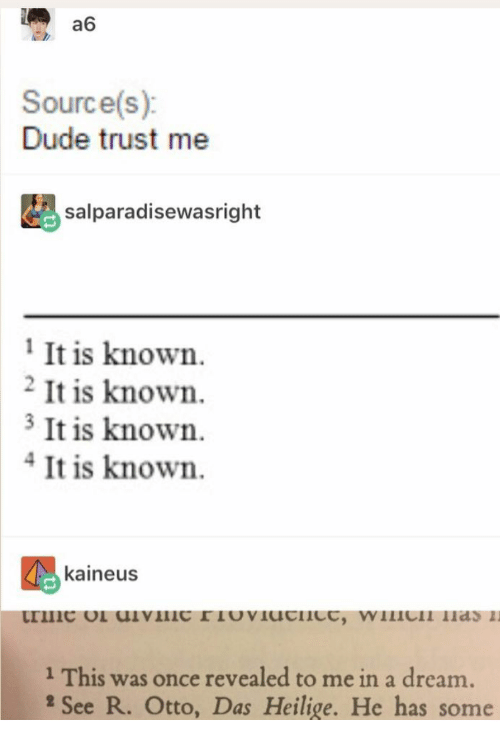
“World of roguecraft – Balance” Youtube, uploaded by Knight Demons on 12 Sep, 2012, https://www.youtube.com/watch?v=vX1dPTAQ5_U
“Warrior vs Frostmage” Youtube, uploaded by MikeMirs on 28 Feb, 2008, https://www.youtube.com/watch?v=qrs7LnmdNy8
“Matsuoka Shuzo [松岡修造 ] – あきらめかけているあなた (NEVER GIVE UP!!) [English]” Youtube,
uploaded by Ryuujin131 on 25 Jun, 2010, https://www.youtube.com/watch?v=KxGRhd_iWuE
“It’s ok to be yourself” Youtube, uploaded by Tofupupper on 22 Oct, 2018, https://www.youtube.com/watch?v=RahYj4xs_dU
